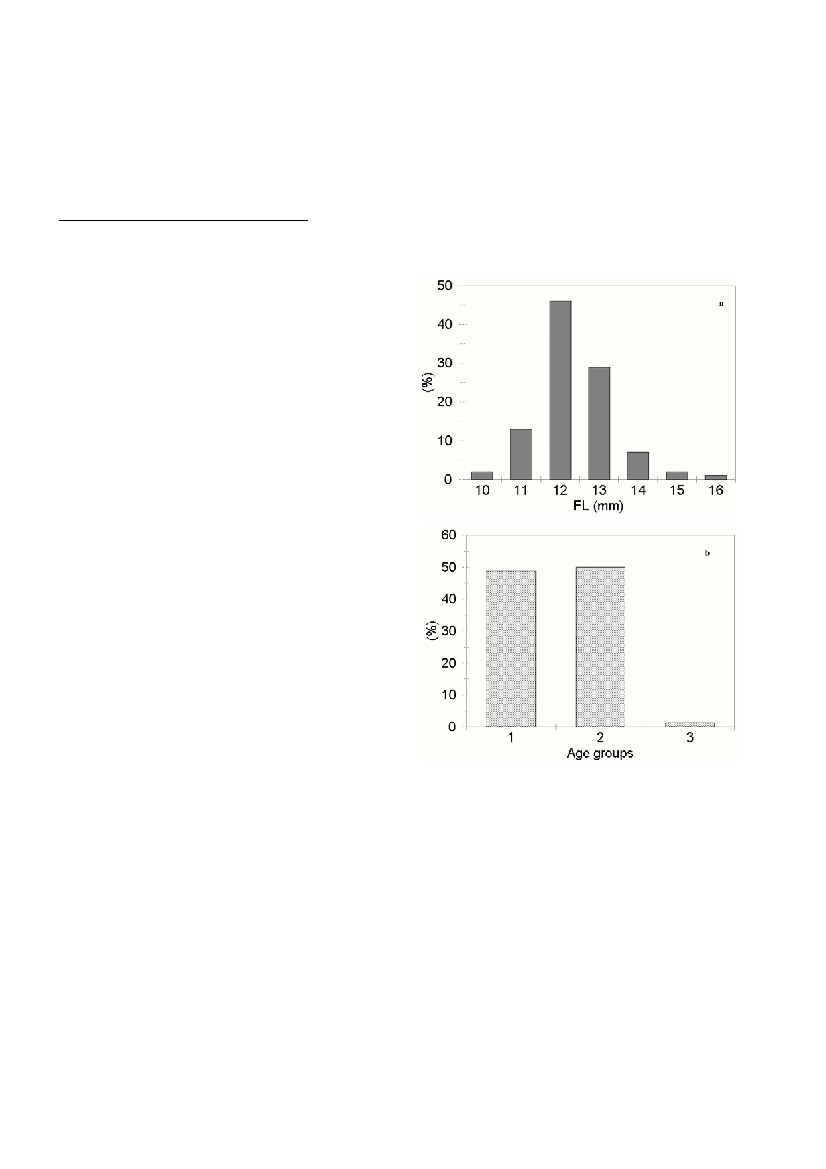Rapp. Comm. int. Mer Médit., 36,2001
335
The Amvrakikos Gulf, is a nearly enclosed water body, with a max-
imum depth of 65 m, in which two rivers discharge relatively large
quantities of fertilizers and pesticides used in the intensively cultivat-
ed surrounding plains. Moreover, aquaculture farms located in the
northern part of the gulf, as well as domestic sewage from three
coastal cities, contribute to further organic enrichment. The study of
various chemical, as well as biological parameters have revealed that
the area should be considered as one of the most eutrophic in the
Mediterranean Sea (1). Distribution of water properties in the gulf sug-
gests that surface salinity remains very low throughout the year, result-
ing to strong stratification of the upper layer, low oxygen values near
the bottom and to the formation of laminated sediments at deeper areas
and at bottoms of the inner part. The above are possibly connected, at
least to a certain extent, with the decline of demersal fish catches in the
Amvrakikos in recent years.
The red mullet (Mullus barbatus), along with the common sole
(Solea solea) and the marine shrimp (Penaeus kerathurus) constitute
the three commercially most important species of the Amvrakikos.
The present study provides data on the biology/ecology of the red mul-
let, in order to shed some light on the status of the stock in the gulf,
and clarify certain trends that appear to the respective fishery.
Samples were collected from 13 stations, using a 17 mm trammel
net, during five seasonal cruises conducted in the Amvrakikos. The
fork length (FL in mm), body weight (W in grams), sex and gonadal
maturity were recorded for each specimen, while the otoliths (sagittae)
and stomach were extracted and preserved for studying respectively
the age and feeding habits of the species in the Amvrakikos.
In all, 1518 red mullet were caught, the 73.8% of which had a size
belonging to the 120-140 mm length interval (Fig. 1a). The dominant
age groups of the stock were one and two years, while larger (three-
year old) specimens were rarely encountered (Fig. 1b). Mean length-
at age appeared to be smaller than in other Greek areas (2), suggesting
possibly a reduced growth rate for the species in the gulf. Growth in
weight was allometric, implying the existence of thinner specimens
for their length. The study of the gonadal maturity of the fish revealed
that in May, when red mullet spawn in Mediterranean waters (2), very
few specimens with mature gonads were collected in the gulf. The lat-
ter could be associated to the fact that the red mullet stock in the
Amvrakikos comprised relatively small, sexually immature speci-
mens. In the striped mullet (M. surmuletus) the existence of an onto-
genetic movement to deeper waters appeared to be triggered by first
maturity (3). If this is also the case for red mullet, it appears possible
to hypothesize that laminated sediments in deeper areas of the gulf
prevent the dwelling of living organisms there, causing possibly the
migration to the Ionian sea, where the species appears to reproduce,
according at least to the results of an ichthyoplankton survey study (1).
Moreover, the feeding intensity of red mullet in the Amvrakikos
appeared to be reduced, particularly in the inner part of the gulf and
during the winter-spring period. The latter coincides with the period of
increased river ?ow, which seemed to be critical for the benthos of the
area (1). The observed reduced feeding intensity might result to
reduced growth of the specimens, and was also mentioned for the cod
in the gulf of St. Lawrence (4), and was correlated with existing
hypoxic conditions. In the framework of the present study, it was
impossible to isolate hypoxia effects, as well as those of interacting
factors in this highly eutrophic area.
Our data show that the Amvrakikos red mullet stock consists of rel-
atively young, sexually immature fish, and although trawl fishing is
prohibited in the gulf, this stock is fully vulnerable to coastal fisheries.
Moreover, further study is needed, in order to evaluate the observed
trends regarding reduced feeding intensity and consequent growth per-
formance, as responses to the prevailing conditions in the gulf. In fact,
a thorough investigation on the Amvrakikos current fishery potential
should be conducted.
Figure 1. Length (a) and age (b) frequency distribution of the
red mullet in the Amvrakikos Gulf.
References
1. Anon., 1989. The oceanographic study of the Amvrakikos Gulf.Final
Rep., Ministry of the Environment. Vols. 1-7, (in greek).
2.VassilopoulouV. and Papaconstantinou C., 1991. Aspects of biology
and dynamics of red mullet (Mullus barbatus) in the Aegean Sea.
GFCM/FAOTech. Rep., 477 : 115-126.
3. Machias A., Somarakis S. and Tsimenides N., 1998. Bathymetric
distribution and movements of red mullet (M. surmuletus).Mar. Ecol.
Prog. Ser., 166 : 247-257.
4. Chabot D. and Dutil J. D., 1999. Reduced growth of Atlantic cod in
non-lethal hypoxic conditions. J. Fish Biol., 55 : 472-491.
THE BIOLOGY-ECOLOGY OF A DEMERSAL FISH IN A HIGHLY EUTROPHIC LAGOON
OF NORTHEASTERN MEDITERRANEAN
V.Vassilopoulou*, E. Caragitsou and C. Papaconstantinou
National Centre for Marine Research, Hellinikon, Athens, Greece
Abstract
Data on the biology and ecology of the red mullet in a major gulf of western Greece, submitted to high organic enrichment, are provided.
The red mullet stock in the study area comprised relatively small specimens, which appeared to perform an ontogenetic movement to the
neighbouring Ionian Sea, at the onset of their sexual maturity. Reduced feeding intensity and growth of the specimens in the study area
are also discussed.
Keywords : Teleostei, growth, diet, eutrophication

